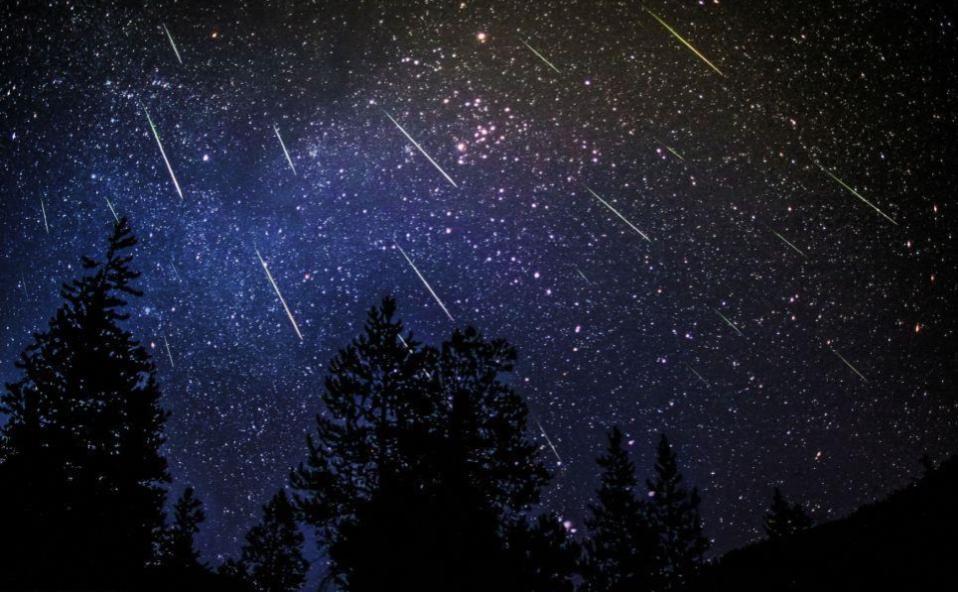A nice meteor shower, the Lyrids, peaks in the early morning of April 22nd this year. Meteor showers happen when the Earth passes through patches of debris left behind by comets when they pass through the inner solar system in their orbits around the Sun. Meteor showers happen several times a year and greatly increase our chances of seeing a meteor. The Lyrids happen each April seeming to come from the sky where we see the constellation Lyra, the harp; that is, in the east-northeastern sky, from 3 to 5 am from April 20th to to April 24th (peak day on April 22nd). Sky-watchers may expect to see about 20 meteors per hour.
The prime evening planet this April continues to be Venus, well up in the southwestern sky from dusk to about 11:00 pm. From April 1st to April 5th it will appear to track below the famous Pleiades or 7 Sisters star cluster. This display of a bright planet near fainter, jewel-like stars will be a nice display for both the unaided eye and through binoculars.
Just to the left of the Pleiades we will see Taurus the bull, with Orion, the hunter just below, and the Gemini twins standing high above these two constellations. On April 1st look for the gibbous Moon near the top of Gemini, moving east in its orbit into Leo the lion by April 3rd.
Jupiter rises in the east by 3 am, with Saturn and Mars coming up just 30 minutes later. This trio of planets will afford us great looks at all three during the 2 hours before sunrise all month. Jupiter will brighten all month so that surface details (the colorful bands of clouds encircling it; and the famous Red Spot) can be seen with those of us with telescopes. Saturn also brightens all month and may be seen just above the last quarter Moon on the morning of April 15th. Telescopes easily reveal the beautiful rings of Saturn. Saturn and Jupiter will draw to their closest approaches to Earth this year during the summer. Then they will be easy to see in our evening skies.
Mars will be close to Saturn on April 1st in our eastern morning skies; so that, the obvious color differences between the reddish Mars, and the soft yellow Saturn will be striking to see. Come October, Mars will be at its closest to Earth since 2018, when it will be even brighter than Jupiter is now! Telescopes will reveal great surface details of Mars to us then.
Don’t miss the latest! You can subscribe to The Talbot Spy‘s free Daily Intelligence Report here



Write a Letter to the Editor on this Article
We encourage readers to offer their point of view on this article by submitting the following form. Editing is sometimes necessary and is done at the discretion of the editorial staff.